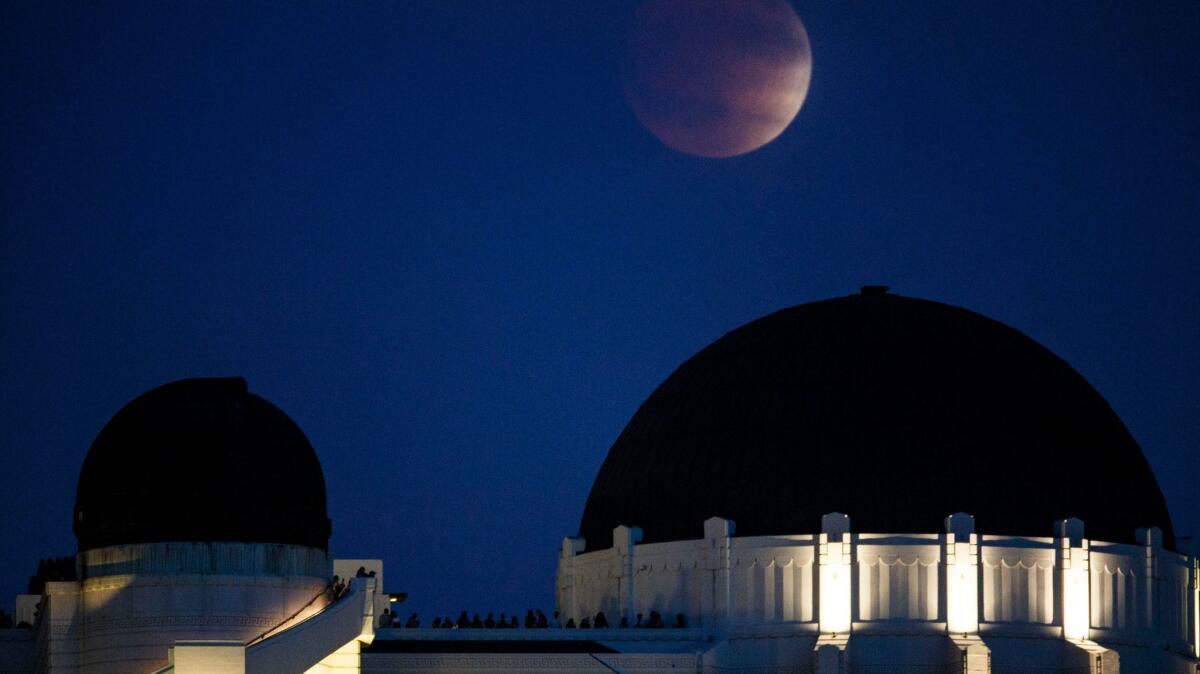To turn L.A. into an aspirational dreamland, the ‘La La Land’ crew shut down a busy freeway — twice
- Share via
“La La Land,” a musical about two beautiful young people falling for each other in Los Angeles, was always meant to be a love letter to the city.
“It’s not ‘Training Day,’” joked David Wasco, the film’s production designer, who’s worked on grittier L.A. films “Collateral” and “Pulp Fiction.” “There’s a sweetness to it — kind of a heightened, dreamy movie world thing.”
The movie, directed by “Whiplash’s” Damien Chazelle, does depict L.A. as an aspirational dreamland — a place imbued with the power to transform us into our best selves. That’s how the film’s two leads seem to view it, anyway. There’s Mia, played by Emma Stone, a small-town Nevada transplant who dreams of being a star despite an endless stream of mortifying auditions. Sebastian, meanwhile, played by Ryan Gosling, wants to open his own jazz club but can’t seem to get anyone else in town interested in the old-school music.
When the two cross paths and start to fall in love, they explore their new feelings while exploring L.A. together. The movie, which opens Dec. 9, shot at 48 locations in 42 days, showing off such city landmarks as the Watts Towers, Angels Flight and the Griffith Observatory. How’d they pull it off? We asked Wasco and supervising location scout, Robert Foulkes, to give us a tour of the movie’s dreamy landscape.
Griffith Observatory
To pay homage to “Rebel Without a Cause” — the 1955 James Dean film shot largely at the Observatory — Chazelle wanted his leads to spend a romantic evening inside the iconic building perched at the top of Griffith Park in Los Feliz.

Though the characters frolic about exploring exhibits and taking in the view from the top of the hillside, filming wasn’t allowed inside the Observatory’s planetarium. So the production team built the planetarium as a set, even finding a vintage Minolta projector on EBay to give the scene an Art Deco vibe. “It didn’t work and it was, like, 12 feet high, but it helped heighten the charm of everything,” explained Wasco.
110-105 interchange
Like it or not, living in L.A. means living with traffic. Which is why Chazelle decided to open his film with a musical number that takes place in the middle of a gnarly traffic jam. In his initial script, the director envisioned the scene taking place on a “Hollywood freeway,” but Foulkes knew the odds of shutting down the 101 between Sunset and Vine were slim. Instead, the location scout thought of an EZ Pass lane connecting the 110 and 105 freeways that had a beautiful view of the downtown skyline. He’d used it before in the movie “Cake,” starring Jennifer Aniston, during a harrowing scene when the actress stands on a freeway ledge contemplating suicide.
Once Chazelle signed off, Foulkes had to persuade Caltrans to shut down the freeway not once, but twice: First for a six-hour rehearsal, and then for a weekend in August to film the actual scene. He met with the state agency, using matchbox cars to outline how everything would be staged and requesting 10 California Highway Patrol officers to secure the area.
“My biggest concern was safety, because it had a very low, knee-high parapet on both sides and a 100-foot drop below,” recalled Wasco, adding that the scene required 100 dancers. “But nobody was hurt. It was challenging, though. We filmed on some of the hottest days of the year. I think it was 108 degrees.”
Warner Bros. backlot
Out-of-towners usually envision movie studios as glamorous, exclusive hubs of activity, where A-listers roam free and films shoot under the bright California sunshine. That’s why Mia, an aspiring actress, decides to take a job at a coffee shop on a lot — so she can be as close as possible to the Hollywood action.
In reality, studios all kind of look the same, populated by gargantuan sound stages and nondescript office buildings. But that’s not what we see in “La La Land.” After surveying every studio backlot in town, the filmmakers decided to have Mia work at Warner Bros. because it had the most romantic-looking exteriors. “I’ve scouted several studios, and Warner Bros. is one of the best for the old Hollywood look,” said Foulkes. “The colors are great, and they haven’t put too many modern buildings everywhere you look.”
Production did build a faux coffee shop for Mia to work in, plastering the walls with vintage photographs of actors like Lucille Ball and Spencer Tracy enjoying coffee and doughnuts. Across the street from the shop, however, was a real piece of Hollywood history: A window used in “Casablanca.” Chazelle was so jazzed when he found out about the historic window that he added a line into the script where Mia gushes over her love of the 1942 classic.
Lighthouse Cafe/Hermosa Pier
L.A. isn’t exactly known for its jazz scene, so making a movie about an aspiring jazz musician presented challenges. Many of the locations where Sebastian is shown playing music are actually just generic restaurants or bars off-screen. Save for the Lighthouse Cafe, a Hermosa Beach bistro where locals have been enjoying jazz since the 1950s. Fortunately, the joint is right next to the Hermosa Pier, so it also provided an easy way to get the Pacific Ocean in the movie. “We kept asking, ‘How do we get the beach in the movie?’” said Foulkes. “All we had to do was push our equipment down around the corner from the Lighthouse Cafe to the pier, and suddenly we had our water element. It’s hard to have an L.A. movie without the beach.”

Ryan Gosling and Emma Stone star in “La La Land.”
Fern Dell Park
Just a few streetlights and a bench. That was all production needed to create one of the most visually stunning scenes in the film. Well, that and Gosling and Stone, who put in weeks of training preparing to film a dance number at sunset in Griffith Park. The scene is pivotal in the film: Mia and Sebastian are leaving a hillside party, looking for their cars. Soon, they’re singing and dancing, but it’s the backdrop that really adds to the magic of the moment. To capture the perfect light, the actors had about 20 minutes to film a nonstop take of the six-minute dance scene — meaning no mistakes allowed. “Damien wanted to hearken back to old-school musicals, when things were beautiful and clean and romantic,” explained Foulkes. “And L.A. can be that. Sometimes tourists just miss it.”
Follow me on Twitter @AmyKinLA
More to Read
Only good movies
Get the Indie Focus newsletter, Mark Olsen's weekly guide to the world of cinema.
You may occasionally receive promotional content from the Los Angeles Times.











